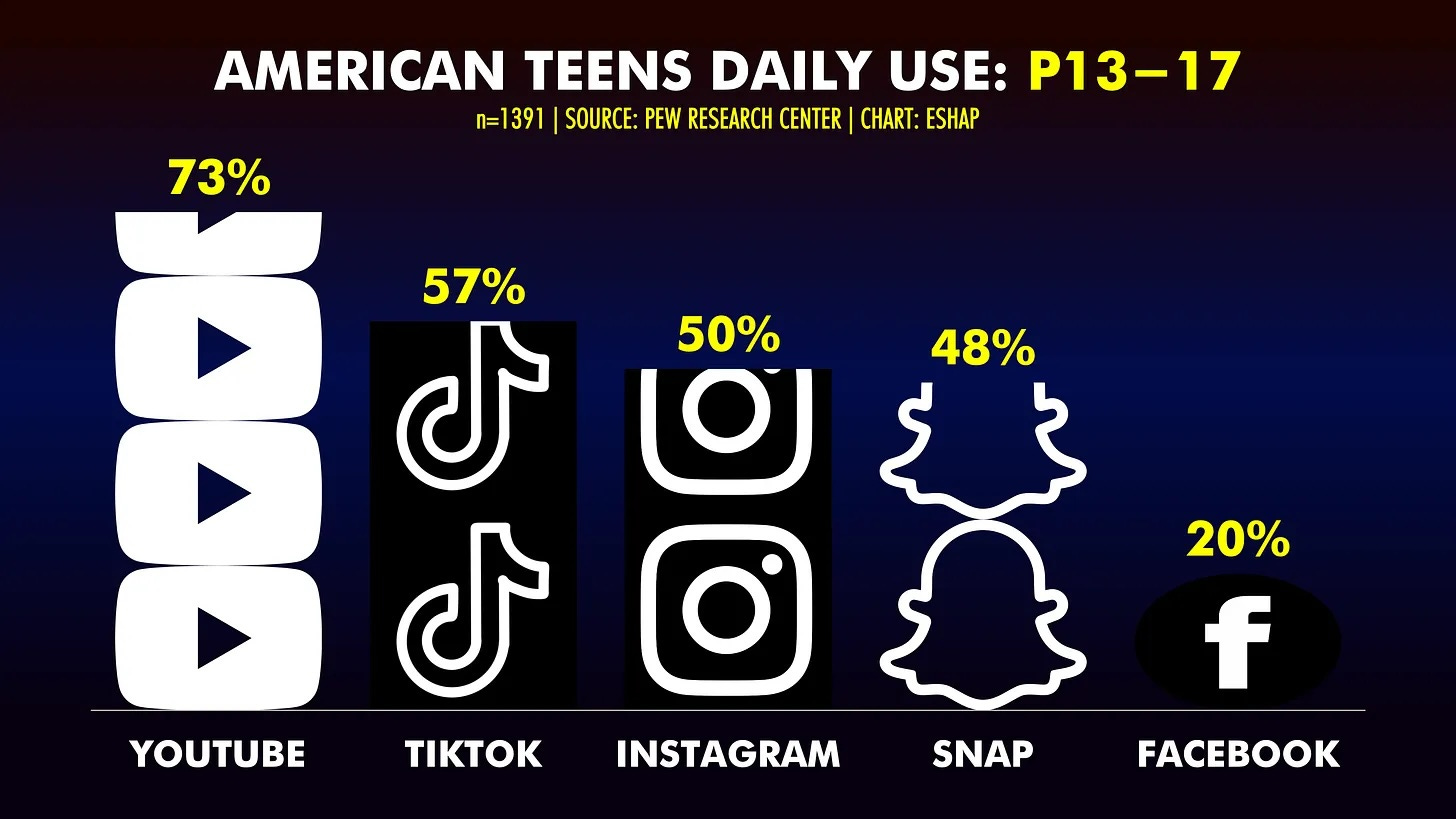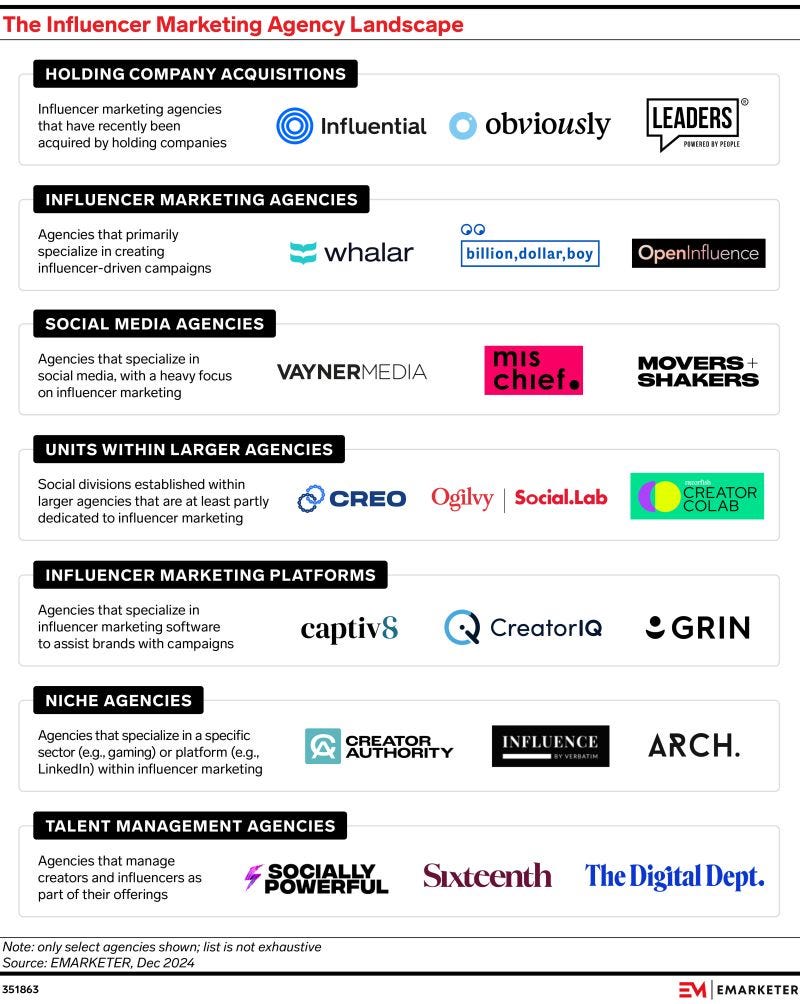Content Marketers Are Fighting the Last War
Where your traffic comes from is not where your audience spends its time.
This will be the last ZeroDraft of the year, unless the skiing is so bad that there’s nothing better to do next week than sit at the computer and think about content marketing. Let’s hope for snow.
Before signing off for 2024, I want to thank everyone for reading, commenting and being part of this experiment. My hope was to start a community discussion on the future of media in the context of a newsletter, and the first few months have been incredibly fun initial steps down that road. I have loved spending time every week researching, writing and talking with the marketing and media community, and I am appreciative of everyone for the feedback.
Thanks for reading, and without further ado…

In last week’s post, I explored why relatively few athletes who have achieved the highest levels of success as measured in “traditional” terms — brand sponsorships, podiums, film parts, magazine covers — have built their own communities on YouTube. And I started to consider what a new generation of creators and media-of-one companies means for content marketing.
Since that post dropped, I’ve had conversations with both creators and marketers who are trying to figure out the smart strategic response. One thing that struck me this week was Emarketer’s Jasmine Enberg recently posted a very good overview of the creator universe, which hints at how complex this economy has become.
Most marketers have engagements in multiple categories, plus contracts not listed here: at least one social data tool and a suite of creator services from their existing creative and paid media agencies.
When I think about this tangle of players combined with radically changing trends in SEO, plummeting website traffic from social media, declining influence of traditional media and more, it strikes me that the future is defined less by your mastery of any one channel than by your ability to create and maintain attention wherever your audience spends time. That’s the challenge for the next era.
Focus More on Audience Attention; Less on Acquisition Channels.
Owned, earned, paid. Social media, SEO, SEM, affiliate, community management, social listening.
There are so many specialized channels, and (justifiably) whole industries with unique lexicons around executing and measuring on each of them. I get it — these are fast-moving and complex specialties, and they often operate independently within companies.
But I think it’s a worthwhile exercise to reset for a second and think in terms of audience attention rather than audience acquisition. Here’s why.
It’s a worthwhile exercise to think in terms of audience attention rather than audience acquisition.
First, focusing on distinct audience channels perpetuates the illusion that the audience experiences the digital world in this way. Audiences don’t consume media in silos; they move constantly between social, email, videos and websites, sometimes learning things on your website, often consuming content in myriad other places. How users end up at your site doesn’t reflect where they spend their time and attention.
I like the way Rand Fishkin discusses the divergence between traffic source and attention. As he points out, Google moves traffic around the internet (although that is changing thanks to AI), but it’s not where people invest their time.
Attention is divided among many types of digital media, and “all these places are where attention is paid and where people form the opinions that they have… It is not just happening on the sites that drive directly measurable and attributable traffic.”
Second, the focus on individual acquisition channels usually manifests itself inside companies as different teams, operating separate strategies, with non-overlapping budgets. It creates fiefdoms to protect, and business successes to fight over. One example: when I consult on content strategy, I typically find multiple creator budgets hidden within different teams, but often targeting similar, or even the same, creators. It’s a recipe for confusion and inefficiency.
Third, an overly channel-focused approach can make a content strategy highly vulnerable to changes in third-party platforms. When Facebook traffic falls, or search patterns shift, how quickly can you adapt if you have non-aligned teams fighting to keep their channel strategies funded?
Thinking more broadly in terms of audience attention might help drive a strategy in which you 1) Focus on being present wherever people spend their time, 2) Maintain better cross-platform consistency in voice and tone, and 3) Avoid becoming overly reliant on the audience leaving one channel and going somewhere else. Audiences don’t want to do that, and the platforms really don’t want that to happen.
In-House Teams Should Reflect The Attention Economy
If you conceive of content consumption as a pool of attention spread across multiple platforms, then your team structure and job descriptions may have to change.
At the employee level, that might mean consolidating management of athletes, creators and individual affiliates. For example, most outdoor brands have team managers, who are likely ex-athletes themselves, identifying and onboarding talent; then a separate person on the social media team managing “creators” who make social content; and often a third person working with individuals who are affiliate partners. And that’s not counting some role for the PR/Communications team, which is often mixed in there too.
This division of work doesn’t fit a coming generation of creator-athletes who are equal parts influencer, athlete, media brand and entrepreneur. Research indicates that 94% of brands use influencer content outside of the creators’ channels, and 81% generate content that those creators will never post on their own channels. Within an organization, which team manages programs like that? Is that a creator program or an advertising agency deal? A paid social program? Maybe the next generation of “team managers” are actually “talent managers,” who actively identify and develop an array of relationships with a very wide array of athletes, affiliates and creators.
There’s a growing consensus around the need for an in-house, executive-level role that plays equally in creators, social content, marketing data and cross-platform coordination.
This also highlights the necessity to build a tight working group of talent managers, social media leadership, brand storytelling leadership, marketing leadership and agencies. This cross-functional partnership should collaborate on how to manage the variety of content creators, athletes, content channels and data opportunities into something approaching coherence.
Outstanding data storytelling brings it together.
This is not about measuring ROAS or some other individual metric. (Yes, measure that, report on it, and understand its value.) But it’s also vital to build an annual content plan that is a series of distinct, measurable campaigns, and give your team the tools and time to understand and contextualize what was achieved. If you can’t paint a picture internally of how the efforts aligned and the metrics that each contributed to the bigger goal, then you’ll fall back into breaking down individual metrics absent the bigger picture.
Data gaps are a fact of life. A good campaign might drive impressions from micro- and macro-influencers, clicks from affiliates, athletes in YouTube films, content that fuels organic social, which in turn creates audiences that the paid team can retarget, and so forth.
No magic bullet can eliminate all the gaps, but it’s important to mandate the time to measure, value and talk about how all these elements build upon each other.
I’m not making a list of 2025 predictions, but I feel quite confident that the brands and media entities that grow fastest over the next few years will be those that can adapt best to the breathtaking speed of change in the media ecosystem.



